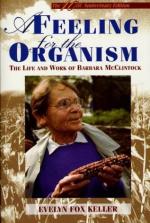|
This section contains 606 words (approx. 2 pages at 400 words per page) |

|
Chapter 3, Becoming a Scientist Summary and Analysis
Most of McClintock's teachers supported her, despite the fact that she was female. They would often talk outside of class and left her free to study as she pleased. By her second year of graduate school, she knew what she wanted to study - chromosomes. She picked up some new techniques for chromosomal analysis for studying chromosomes under the microscope.
Evelyn explains that chromosomes are found in the nucleus of the cell; she describes the process of mitosis and meiosis. McClintock apparently found this fascinating. These processes of chromosomal reproduction made it clear by the 1920s that they both carried genes and had something to do with inheritance. One limitation of genetics at the time was that geneticists studying mostly fruit flies and corn. McClintock learned the shape, size and other traits of all ten...
(read more from the Chapter 3, Becoming a Scientist Summary)
|
This section contains 606 words (approx. 2 pages at 400 words per page) |

|




